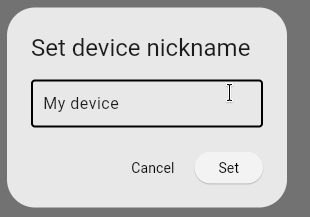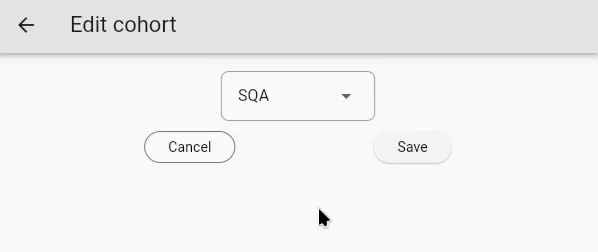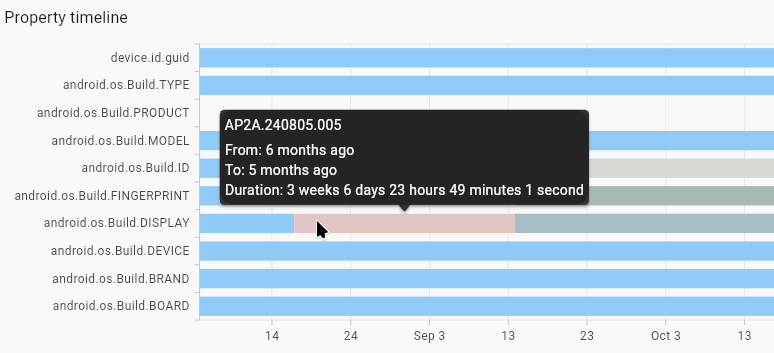Device Management
HexDroid gives you full visibility into your device fleet with real-time monitoring, property tracking, and metrics. Organize devices into cohorts, analyze device performance, manage software rollouts for Android, AOSP, Linux, IoT, and embedded systems.
Setup
- Integrate either Metrics SDK or hexd daemon into your application/service/device.
- For HexDroid to link incoming reports to a specific device, set up
Device IDmapping in Project Settings → Property Settings and set Device ID. Learn more.
Features
Device List
HexDroid provides a centralized device list that offers an overview of all registered devices, giving an at-a-glance summary of each device's key information. The list includes the device ID, a set of customizable properties, and the current cohort each device belongs to.
You can customize the properties displayed for each device, allowing you to focus on the most relevant information. For example, you may choose to display only the software version and hide hardware details, or vice versa. This flexibility ensures that the list is tailored to meet your specific needs.
With cohort management, you can easily see which group each device belongs to, making it easier to manage device rollouts and targeted updates. The device nickname feature adds a layer of convenience, letting you assign friendly names to devices for quick recognition and easier management.
Device Overview
The device overview provides a deeper dive into the key attributes of each device. From here, you can view or update device nicknames, assign devices to specific cohorts, and review the latest reported properties, such as software and hardware versions.
The overview also includes the latest device properties, ensuring that you have real-time visibility into the current state of each device. This feature is essential for tracking updates, managing versions, and ensuring that devices are running the most up-to-date software.
Device Cohort/Nickname/LastSeen
By setting custom nicknames, you can personalize the device list to make it more user-friendly.
Cohorts are fully configurable, allowing you to group devices in whatever way best fits your organization—whether by release process (dev/sqa/prod), or any other classification.
Last Seen indicates when device was last seen by HexDroid.
 |  |
|---|
Device Properties
HexDroid provides a comprehensive view of the latest reported device properties, ensuring you are always up-to-date on the status of your devices. This feature tracks key metrics, such as the software version and hardware version, and provides a timestamp for when the last update was made.
By monitoring device properties, you can quickly identify issues or confirm that devices are operating with the correct configurations. You can also use this information to ensure consistency across your fleet and catch any discrepancies that may arise during updates or rollouts.

Device Metrics
HexDroid gives you in-depth access to all metrics reported by a device, enabling you to analyze device performance over time. Whether you're monitoring battery health, device temperature, network activity, or any other metric, HexDroid provides an interface to select, view, and analyze the data.
You can select any metric from the device and view its historical data, with the ability to apply various aggregation methods such as averages, percentiles, and min/max values. This allows you to identify trends, diagnose issues, and optimize performance across your fleet.

Device Timeline
The device timeline provides a visual representation of how key properties and activities of your devices have evolved over time. With two types of timelines available, you can track both property changes and device activity, giving you a complete picture of device performance.
Property Timeline
This chart shows how specific device properties, such as software versions, have changed over time. You can easily track when updates were applied, which versions were deployed, and how often those changes occurred.

Activity Timeline
The activity timeline presents a heatmap of device activity over the past year, highlighting when a device was active and reporting data. This is particularly useful for understanding device usage patterns, detecting periods of inactivity, and ensuring that devices are functioning as expected.